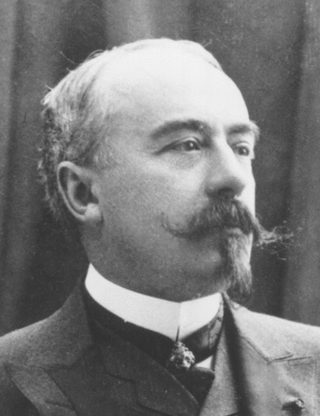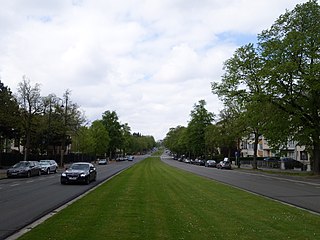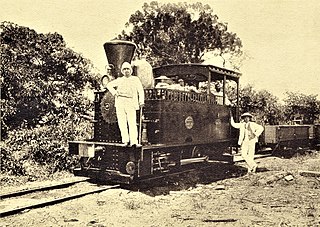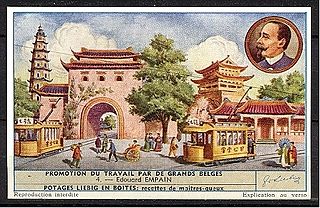| |||||
| Decades: | |||||
|---|---|---|---|---|---|
The following lists events that happened during 1930 in the Belgian Congo .
| |||||
| Decades: | |||||
|---|---|---|---|---|---|
The following lists events that happened during 1930 in the Belgian Congo .
| Date | Event |
|---|---|
| First year of production for Minière des Grands Lacs Africains (MGL), when 25 kilograms (55 lb) of gold were mined. [1] | |
| 14 October | Joseph-Désiré Mobutu, future president, born in Lisala. |

Camille Gutt, born Camille Guttenstein, was a Belgian economist, politician, and industrialist who served as the first managing director of the International Monetary Fund (IMF) from 1946 to 1951. He was the architect of a monetary reform plan that facilitated the recovery of the economy of Belgium after the Second World War.

The Royal Museum for Central Africa (RMCA), communicating under the name AfricaMuseum since 2018, is an ethnography and natural history museum situated in Tervuren in Flemish Brabant, Belgium, just outside Brussels. It was originally built to showcase King Leopold II's Congo Free State in the International Exposition of 1897.

Banque Indosuez was a French bank, the product of the 1975 merger of Banque de l'Indochine and Banque de Suez et de l'Union des mines. It was purchased by Crédit Agricole in 1996, and formed the core of what is now Crédit Agricole Corporate and Investment Bank. As of 2022, its brand survives in Indosuez Wealth Management, the Crédit Agricole group's wealth management arm.

Édouard Louis Joseph, 1st Baron Empain, was a wealthy Walloon Belgian engineer, entrepreneur, financier and industrialist, as well as an amateur Egyptologist. During World War I he became a known Major General.

Jeumont is a commune in the Nord department in northern France. It lies on the Belgian border and on the river Sambre, adjacent to the Belgian town Erquelinnes. It is part of the agglomeration of Maubeuge.

The Villa Empain is a former private residence in Brussels, Belgium, which currently serves as a cultural centre and exhibition space. Built in 1930–1934 in Art Deco style by the Swiss-Belgian architect Michel Polak, the villa was commissioned by Baron Louis Empain, son of the industrialist Édouard Empain. It subsequently served as offices and an embassy before falling into disuse. After a restoration from 2009 to 2011, it was opened to the public by the Boghossian Foundation.

The Baron Empain Palace, better known as Le Palais Hindou, is a distinctive and historic Hindu temple inspired mansion in Heliopolis, a suburb northeast of central Cairo, Egypt. It was founded by Edward Louis Joseph Empain, a Belgian businessman who was awarded the title of "Baron" by the King of Belgium due to his contribution to the Paris Metro and tramway lines connecting Belgium, Northern France, and Holland.
Content in this edit is translated from the existing French Wikipedia article at fr:Gaston-François de Witte; see its history for attribution.
Empain-Schneider was a Franco-Belgian industrial group formed in the 1960s from the merger of Belgium's Empain group and France's Schneider & Cie. In 1980 it was renamed Schneider SA. Throughout the 1980s and 1990s, the group was comprehensively restructured and sold most of its historic activities while acquiring operations linked to electrical equipment, leading up to its renaming in 1999 as Schneider Electric.

The Avenue Franklin Roosevelt (French) or Franklin Rooseveltlaan (Dutch) is an avenue in Brussels, Belgium. It is located in the southern part of the City of Brussels, near the border with the municipality of Ixelles, where it runs parallel to the Bois de la Cambre/Ter Kamerenbos. It is named in honour of the 32nd President of the United States, Franklin Delano Roosevelt.

The Compagnie du chemin de fer du Congo supérieur aux Grands Lacs africains was a Belgian railway company established in 1902 in the Congo Free State, later the Belgian Congo, now the Democratic Republic of the Congo. It provided service in the eastern part of the colony south of Stanleyville (Kisangani) to serve the settlers and mining operations in Katanga. It operated a combination of river steamer service along the Lualaba River and railway links where the river was not navigable, including a link to Lake Tanganyika. In 1960 it became the Société congolaise des chemins de fer des Grands Lacs.
Cominière was a Belgian holding company active in the Belgian Congo. It was involved in plantations, forestry, mining, railways and other activities. The Congo assets were nationalized when the Democratic Republic of the Congo became independent in 1960. What remained of Cominière was acquired by Lonhro in 1971.
The Compagnie Minière des Grands-Lacs (MGL) was a Belgian mining company active in the Belgian Congo and then in the Democratic Republic of the Congo. It was established in 1923 and in 1976 merged with other companies into the Société Minière et Industrielle du Kivu (SOMINKI). The company was active in the eastern regions of Maniema and Kivu, with its main center at Kamituga in today's South Kivu. It extracted gold, tin and other minerals.
'La Belgika was a trading company that was active in the Congo Free State and the Belgian Congo. It produced, processed and exported commodities such as rubber, palm oil and coffee, and imported basic goods needed by the local people, which it sold in a network of stores.
The Twangiza-Namoya gold belt is a belt of gold deposits in the east of the Democratic Republic of the Congo. Artisanal working of alluvial deposits dates back to the 1920s. More systematic exploration and exploitation took place in the colonial era and continues up to the present, although civil war and militia attacks have periodically disrupted operations and have caused several changes of ownership of the concessions.

The Empain group was a loose grouping of companies founded by Édouard Empain (1852–1929) of Belgium and controlled by the Empain family. From 1881 until merging with Schneider & Cie in 1969, the companies engaged in a broad range of activities including tramways, railways, electricity generation, construction and mining. The main areas of activity were Belgium and France, but the group also pursued opportunities in Russia, Egypt, China and elsewhere, and played a large role in the development of the eastern Belgian Congo.
The following lists events that happened during 1923 in the Belgian Congo.
The following lists events that happened during 1932 in the Belgian Congo.
Odon Jadot was a Belgian railway engineer and administrator. He was responsible for building more than 1,650 kilometres (1,030 mi) of railroad in the Belgian Congo. The lines helped carry copper mined in the Katanga Province to the sea via the ports of Matadi in the Congo, Dilolo in Angola and Beira in Mozambique. They also supported troop movements during World War I (1914–1918) and World War II (1939–1045).

Alexandre Safiannikoff (1903—1988) was a Belgian geologist of Russian descent.